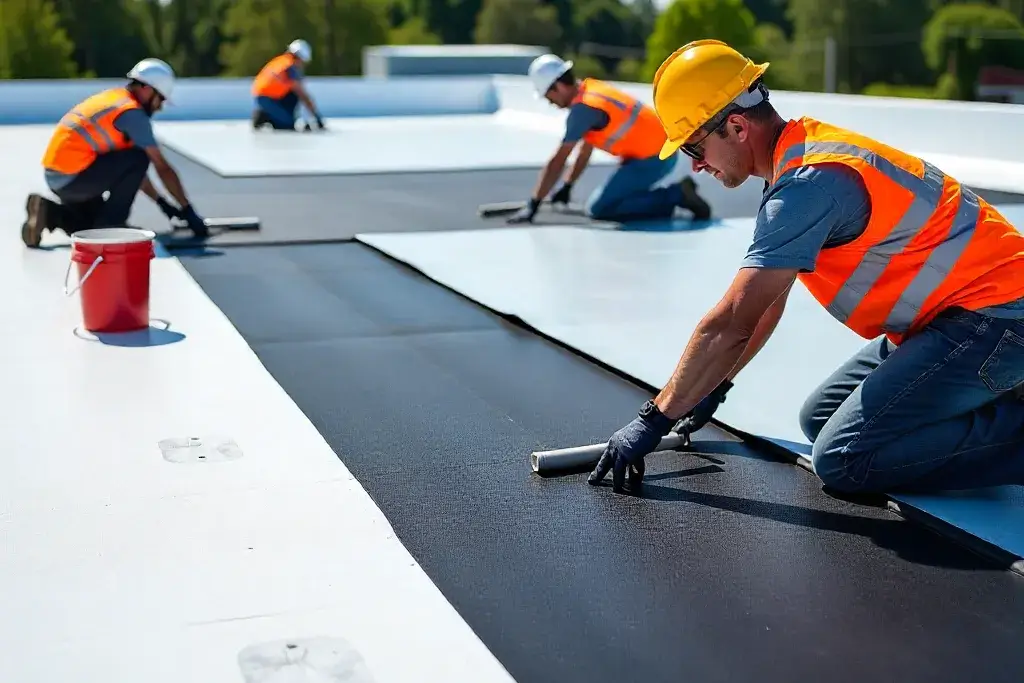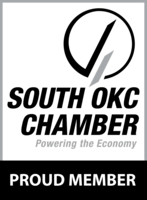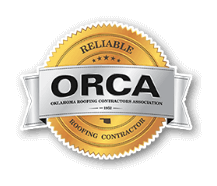Modified bitumen roofs for commercial use have become one of the most trusted options for flat and low-slope buildings for over a century. At Maupin Roofing, we regularly work with commercial roofing systems, and we’ve seen firsthand how well mod bit holds up in Oklahoma’s weather. In this article, you’ll find everything you should know before choosing it for your property.
What Is Modified Bitumen Roofing?
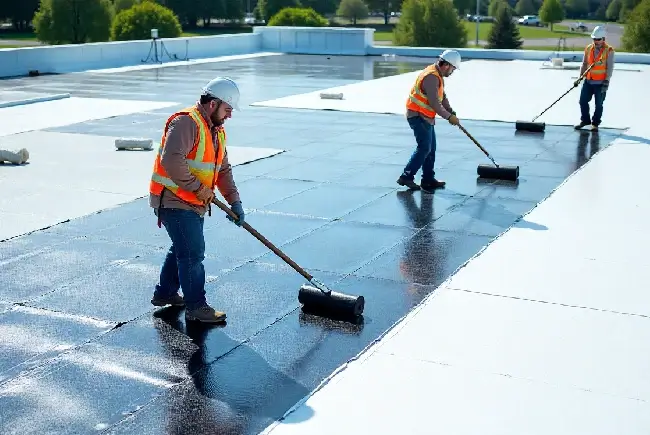
Modified bitumen roofing is a type of membrane roofing system that comes in two or more layers, built for sturdiness and weather resistance, especially for flat roofs and low-slope roofs. It’s essentially an upgraded version of traditional asphalt roofing, more specifically built-up roofing (BUR), but with modern technological advancements that make it stronger and more flexible.
These are the main components of modified bitumen roofing:
Bitumen base: This system starts with asphalt (bitumen), which is the same material used in built-up roofing systems. But modified bitumen takes it further by adding polymers to improve its strength and flexibility.
Polymer modifiers: These are what make the roof “modified.” The most common are SBS (styrene butadiene styrene or SBS roofing), which adds elasticity, and APP (app membranes), which adds UV resistance and durability. SBS membranes are a little more flexible, while APP membranes are more rigid and sun-resistant.
Reinforcement layers: Polyester, fiberglass, or a composite mat gets embedded into the modified base sheets to reinforce the membrane. This helps the roof resist tears and stretching.
Multi-ply system: Typically, these systems have at least two layers (often three or more layers): a base sheet and a cap layer. When applied correctly, this multi-ply system forms a thick, water-resistant membrane that can handle extreme heat, cold weather, and foot traffic.
Surface types: The surfacing layer can be finished with mineral granules (similar to shingles) or a smooth, reflective coating to help with UV protection and reduce heat absorption.
Attachment methods: Installers can use heat-welded techniques (like the torch-down method), cold adhesive, cold-applied processes, or peel-and-stick (self-adhered) options, depending on the project. Some systems require specialized installation methods, while others are better for quicker, lower-risk jobs.
Altogether, modified bitumen roofing blends the rugged reliability of built-up roofing with the flexibility and strength of newer roofing materials like polymerized rubber and synthetic rubber.
Modified Bitumen Roofing System Applications
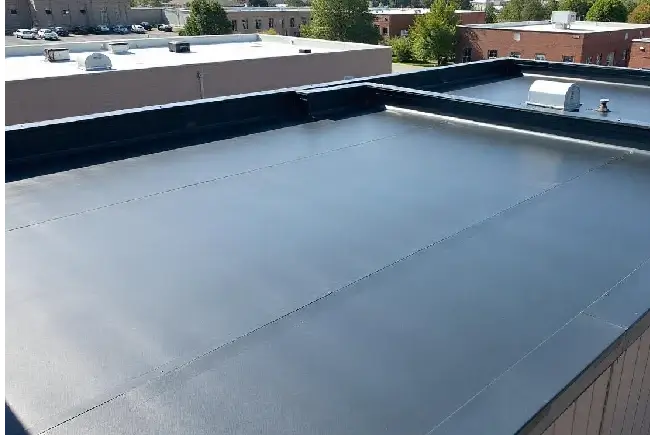
One of the biggest advantages of modified bitumen is how versatile it is. It works in a lot of different scenarios, but there are a few applications where it really shines.
Commercial Buildings
For commercial properties (especially ones with flat roofs), modified bitumen makes a lot of sense. These roofs are often exposed to everything from heavy equipment to foot traffic to strong sun and wind-driven debris. A multi-layered membrane like a mod bit can take that kind of punishment without breaking down.
It’s also a good fit for buildings that need long-term performance with minimal maintenance. Businesses can’t afford frequent disruptions, so a roofing system that’s tough and low-maintenance is a smart investment.
Flat Roofs
Flat and low-slope roofs are where modified bitumen roofing systems perform best. Since water doesn’t naturally run off as easily as on a pitched roof, you need a watertight system that won’t wear out quickly. Modified bitumen membranes are installed in wide sheets that overlap and seal together, creating a seamless barrier that provides excellent waterproofing protection.
And since these roofs are commonly walked on, durability is important. Rooftop HVAC units, foot traffic, and exposure to UV rays and temperature fluctuations can all take a toll. A mod bit roofing system gives it the strength to stand up to that day after day.
Re-Roofing and Overlays
If you have an existing flat roof that’s still in decent shape structurally but needs a new surface, modified bitumen mod bit systems can sometimes be applied as an overlay. This means you don’t have to do a full tear-off, which saves time and money. Of course, roofers always check for moisture, heat absorption, or other damage before recommending this route.
Rooftop Equipment Zones
On commercial and industrial buildings with a lot of rooftop gear like walkways, ducts, or big HVAC units, modified bitumen membranes hold up better than many other options. Their tear resistance and superior protection mean they won’t get damaged easily from dropped tools or constant vibrations.
Roofs That May Be Coated Later
If you’re planning on adding a roof coating or reflective coating down the line to reduce heat and cooling costs, modified bitumen is a great base. It bonds well with coatings and gives you more options to reduce energy costs and boost energy efficiency over time.
Benefits of Modified Bitumen Roofing for Commercial Properties
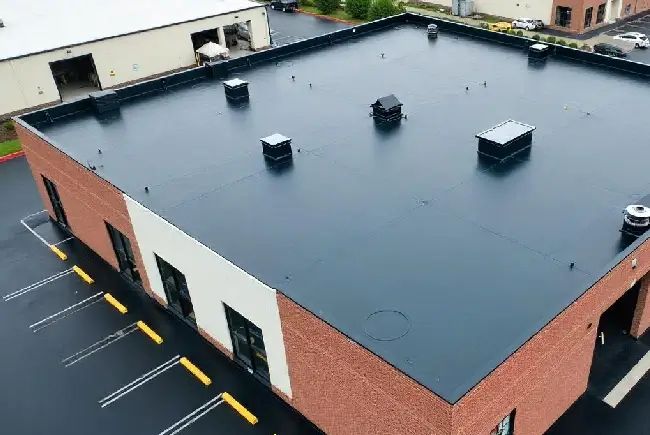
Modified bitumen isn’t just popular because it’s durable. It offers a range of practical benefits that matter to owners planning a commercial roofing project, especially those looking for long-term reliability, cost effectiveness, and energy savings.
Energy Efficiency
Reflective mod bit roofing systems can help reduce energy costs. With a bright-colored cap sheet or a reflective coating, the roof reflects more sunlight rather than absorbing it. That keeps the roof surface cooler, which in turn reduces heat absorption into the building.
Reduced Heat Absorption
The top surfacing layer of the roof plays a big role in how much heat it pulls in. A dark roof can get extremely hot, while a coated or granule-covered mod bit roof can stay much cooler. This reduces the stress from temperature fluctuations and thermal resistance on the materials and helps preserve the roof’s average life expectancy.
Fire-Resistant Properties
Fire-resistant roofing is a must for commercial buildings. Many modified bitumen roofing systems come with strong fire ratings due to their layered design and fire-retardant cap sheet materials. The multi-layer build offers superior resistance to flame spread, which adds an extra layer of safety.
Long-Term Durability
A properly installed mod bit roof can last 20 years or more. It’s one of the most dependable roofing materials when it comes to standing up to cold temperatures, extreme heat, and constant foot traffic. That makes it one of the most cost-effective options for long-term commercial roofing.
Easier Repairs and Maintenance
One major benefit of mod bit systems is their ease of maintenance. Since the membranes come in sheets and overlap, repairs can often be done without removing large sections. If a seam splits or a small tear appears, it can usually be patched quickly and affordably.
Strong Weather and UV Resistance
UV rays, wind-driven debris, and Oklahoma’s temperature swings can do a number on most roofing materials. Modified bitumen roofs, especially SBS membranes, are made to handle those shifts. Their flexibility helps them absorb movement and resist cracking, and their surfacing layer blocks UV rays that degrade other materials faster.
Budget-Friendly Over Time
While modified bitumen roofing might not be the cheapest up front, its cost effectiveness over the long haul makes it a smart business decision. Between its durability, lower maintenance needs, and energy efficiency, it’s one of the most dependable roofing materials you can install on commercial properties.
Mod Bit Roof Installation Process
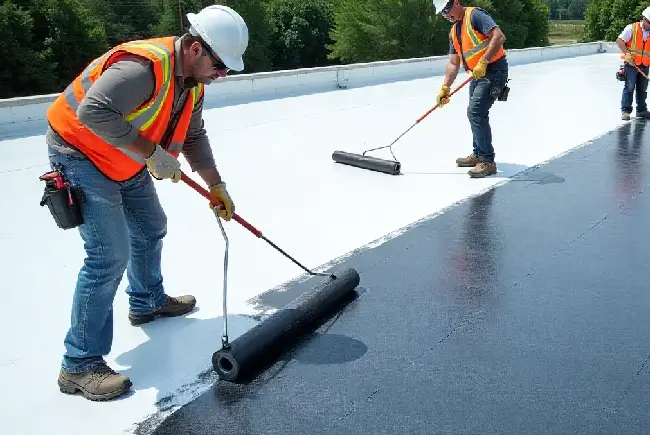
Installing modified bitumen roofs for commercial use is a step-by-step process that requires careful prep, knowledge of various installation methods, and experience with different job conditions. Maupin Roofing’s installation process usually looks like this:
1. Roof Inspection and Planning
Before anything goes on the roof, we start by inspecting the existing roofing system. We look at the condition of any built-up roofing, check drainage, note rooftop equipment, and decide whether to tear off or go with an overlay.
2. Surface Prep
A clean surface is a requirement for modified bitumen roofing to stick properly. That includes removing old asphalt roofing or damaged layers, drying the area, and installing a vapor barrier or insulation if needed. We also prep for things like mechanically attached systems, cold adhesive application, or heat-welded seams.
3. Base Ply Installation
This is the first membrane layer, often an SBS styrene butadiene base. It’s rolled out and attached with a cold adhesive, heat-welded (torch down method), or as a self-adhered sheet, depending on the system. Seams are overlapped, sealed, and pressed for full adhesion.
4. Cap Sheet Installation
Next comes the cap layer. This includes the surfacing, which is either a mineral granule or has a reflective coating. It’s carefully laid down, sealed at the seams, and integrated with the rest of the mod bit system to provide superior protection.
5. Flashing and Penetration Detailing
All the edges, curbs, penetrations, and vertical transitions are sealed using flashing and compatible materials. These are some of the most vulnerable areas of any mod bit roof, so we take extra care here.
6. Final Inspection
Once everything is in place, we check every detail: seams, flashings, attachment points, surface smoothness, and more. The goal is a watertight, long-lasting, fire-resistant commercial roof.
7. Post-Install Maintenance Plan
Even the most dependable roofing materials benefit from regular care. We recommend inspecting your modified bitumen roofing at least twice a year. Keeping it clean, checking for damage, and addressing wear early will help you extend its average life expectancy and reduce repair costs.
Call Maupin for Your Commercial Roofing Needs
We’ve seen it all when it comes to commercial roofing in OKC. From built-up systems to modified bitumen installs, we know what lasts in our climate. Reach out and let Maupin Roofing take the stress out of your next project!
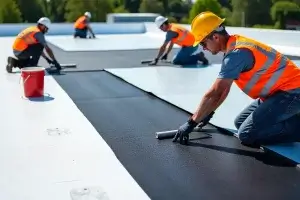
Modified Bitumen Roofs for Commercial Use: What to Know
Modified bitumen roofs for commercial use have become one of the most trusted options for flat and low-slope buildings for over a century. At Maupin
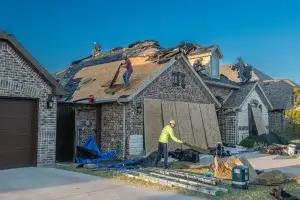
New Roof Installation Guide for Homeowners
As pros in the roofing industry, we know what really goes into a well-built roof and what can go wrong when corners are cut. A
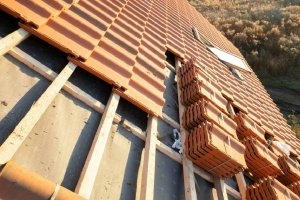
Best Time to Install a New Roof in Oklahoma
Something we often see is homeowners waiting too long to replace a worn-out roof, only to get caught in the middle of inclement weather or
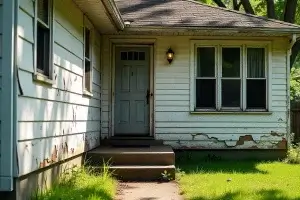
8 Hidden Costs of Neglecting Home Exterior Elements
Many homeowners wait until something breaks before calling for help, but that delay comes with a price. The costs of neglecting home exterior elements often
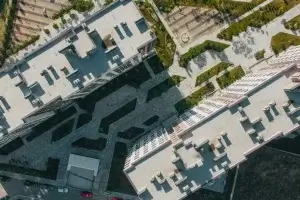
Flat Roof Systems for Commercial Properties: Types, Benefits & Costs
Many commercial buildings in OKC rely on flat roof systems for commercial properties because they’re versatile, sturdy, cost-effective, and easier to maintain. But how do

A Comprehensive Guide to Roofing Health Checks
Protecting roofing health means protecting the whole structure, the people living inside, and the air everyone breathes. For Oklahoma homeowners, regular roofing checks are especially

